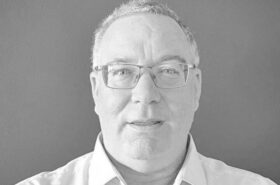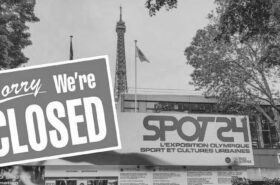 Recording studio in 'Château d'Hérouville' in Hérouville, France on the 20th of September 2021.
Recording studio in 'Château d'Hérouville' in Hérouville, France on the 20th of September 2021.
Laurence Vanay, the forgotten star of the legendary Château d’Hérouville studio
Laurence Vanay has played and recorded at the famous Château d’Hérouville, where Elton John, David Bowie, Pink Floyd and Higelin have played and recorded. Laurent Thibault’s ex-wife is one of the women who have worked in legendary studios since the 1970s. Exclusive interview, for the book Studios de Légende, our French Abbey-Roads.
Unofficial history sequences at Château d’Hérouville by Jacqueline Thibault. At Vaisseau de Pierre, the recording of Kill the King (Rainbow) and Evening (Gateway).

Jacqueline Maire, whose real name is Jacqueline Maire, lived through the 70s as a quiet but very active recording artist. Gifted, Laurence Vanay, also known as Jacqueline Thibault, took up music at a very early age, giving her first concert at the age of four and embarking on a long career that has not yet come to an end. At the age of nine, on a small 4-track Revox given to her by her father, she made her first recordings. By 1973, she was already experimenting with the first synthesizers available on the market, enabling her to compose melodies and arrangements that have seduced audiences far and wide. However, Laurence Vanay-JT was not taken on board, nor does she appear in accounts of the famous studios she frequented, including the most legendary of them all, the Château d’Hérouville. We can assume why: her account of the years she spent there contradicts a few pages of the official legend, and she is a woman in a world where women are rare.
In 1974 and until 1985, you worked, lived, composed and recorded at the Château d’Hérouville, of which you were one of the partners. But we hardly ever talk about you, much more about some of the men who passed through there and were the « mythical bosses »?
Jacqueline Thibault: Yes, in the 70s, a woman artist had little chance of being recognised and accepted in this milieu. As soon as I left the Conservatoire Supérieur de Musique de Paris, where I studied organ and composition, the president of the jury gave my male counterpart a chance, saying: « He’ll at least have a career, or something like that ». Disgusted, I said to myself: since that’s how it is, I’ll do what I want, rock and roll. I didn’t know anything about it. The only music I’d listened to was Elvis Presley because back home it was so strict, you weren’t allowed to listen to records. And that pretty much says it all, even though I started playing music at the age of three. Later, this kind of scene would happen dozens of times when I went into studios: the people there would ask me: « Whose girlfriend are you? when I’d just come in to record or do arrangements.
Another example: I recorded my 1st album at the Milan studio with Gérard Manset, with the help of two Breton musicians – whom I adored and with whom I had played for a long time – and the advice of Laurent Thibault, but it was a bit too unusual because I also played a lot of instruments. Manset left us alone to finish the recording and thought we were mad. For him, apparently, a woman composing this kind of music, which was not fashionable, singing and playing several instruments, was neither usual nor serious.

How did you end up in Hérouville?
My music reached the ears of Laurent Thibault, who at the time had been fired from Philips, the prestigious label he worked for, and who had a piece at Barclay; he found my recordings interesting and in line with what he was producing himself. I was looking for a studio to record in and I told him there was no way I was going to go to d’Hérouville, that there were bad vibes there… A few months later, he called me back and said: that’s it, I’ve signed, I’m taking over the Château. He offered me the chance to become a partner, along with others, in the Château company that had taken over the studio, which was in great difficulty and had just come through some complicated times*. I said no, of course, and then finally yes, and that was very nice. I was married at the time to my 1st husband, who kicked me out when he found out; I had two little girls then and we were able to live in Hérouville, where we spent ten years. And in the end, I stayed. When you arrived at the Château at the time, it was in a state of disrepair, there was almost no equipment left; we had to find second-hand equipment and small groups came, based on the reputation of the place and then English groups, all because we offered modest rates. We did everything ourselves, especially me.
In 1976, Elton John’s musicians returned and this gave the Château a new lease of life.
You were going to do a lot of things on site, welcoming people and groups, helping with numerous recordings and even recording arrangements, but you hardly appeared anywhere.
First of all, I was a woman. Everywhere I went at the time people would ask me whose girlfriend I was and I’d reply: I’m the artist. Really? was the bemused response that followed. My 2nd album, for example, was recorded under the name Gateway because I was supposed to be an English band, that was the atmosphere. And my ex-husband, Laurent Thibault, never really wanted me to appear because, according to him, it would have done the studio a disservice. It exasperated me doing everything I did, composing arrangements and not getting credit very often, but the other partners in the studio approved. However, when I signed the contract to become an associate, it was stipulated that I would make recordings there, but this point was never really respected.

I did a lot of things at the Château, including dangerous things like going into a cellar to turn on the boiler every day, in the wing where the studio is, equipped with big boots, because the boiler was bathed in groundwater. I had no choice, because I had my two daughters there, so I couldn’t go anywhere else, especially as I wasn’t paid.
I also took a lot of care of Ken Higelin, Jacques’ son, who, when I met him, was three years old, the same age as my youngest daughter. Ken was often alone when his father went on tour. Finally, I took care of everything that was needed to welcome groups, give them information, decorate their rooms and replace missing staff.
While you were there, did you ever play on records or compose music? Were you credited for this?
Sometimes, especially for small groups or artists who weren’t very well-known yet, or for productions at the château. But I did a lot of work for Jacques Higelin, with whom things went very well. On the other hand, for Trust, recorded partly on site and then at Davout, things didn’t go too well. In the end, they put the deal in my hands: either you get credit on the album or they pay you. I preferred to get paid, for once.
When you hear the stories that have been told or written about the history of the studio and which gloss over some of these anecdotes or aspects, what does that inspire in you?
To tell you the truth, I sometimes get exasperated. It’s not all false, but it’s slanted in such a way that people think Laurent Thibault did everything, which is not true. The assistants played a very big role, for example. The recordings with David Bowie were also interpreted. I remember that one of the partners, Pierre Calamel, who was in charge of relations and was very efficient, went to FR3, for example, to talk about the studio. Laurent Thibault didn’t forgive him and he was fired.
And sometimes, some of the protagonists don’t remember some of the funny things that happened. For example, Patrick Coutin, who recorded J’aime regarder les filles on the spot, couldn’t record his voice. While he was out to lunch, I drew some funny pictures of men with long-views and things like that, looking at women, and I put them up all over the studio and drew them on the 24-track box. When he came back and saw that, he burst out laughing and immediately recorded his voice, in one take and the right one. He doesn’t remember it, but I do, perfectly, as I’d worked on several tracks on that album. But as Patrick, to his great regret, was never able to get hold of the original tapes…
When Ritchie Blackmore arrived at the studio and all the recording equipment went wrong (…) The rest is in one of the chapters of the book that follows.

Studios de Légende, secrets et histoires de nos Abbey Road français
Beautiful book with exclusive photographs. 352 pages. Weight: 1.3kg!
Published by Malpaso-Radio Caroline Média.
45 euros.







